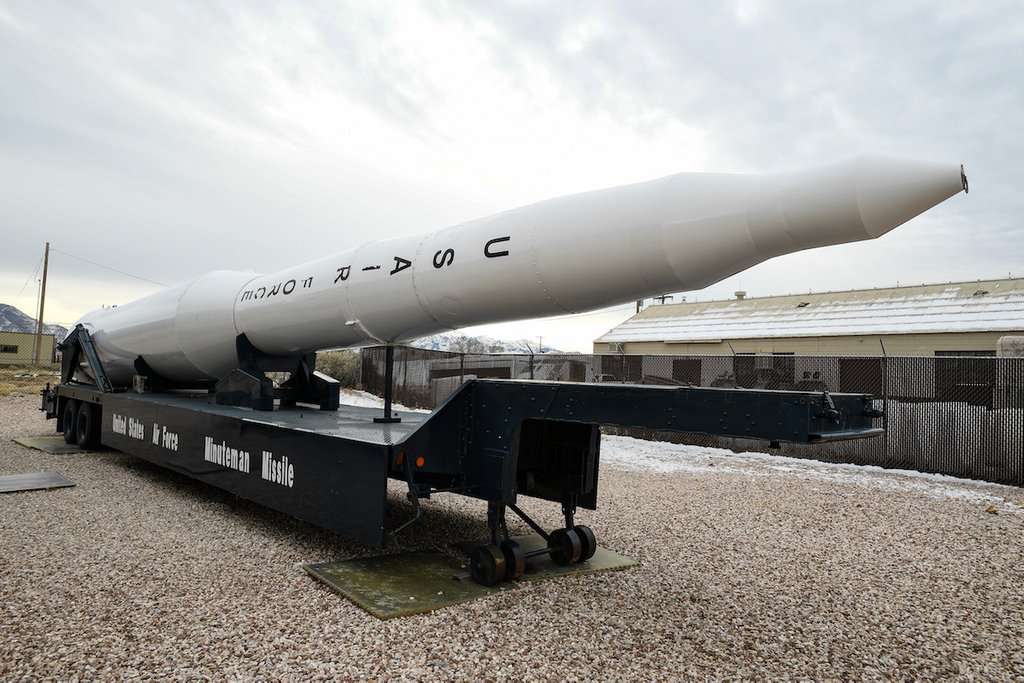The LGM-30 Minuteman III is an intercontinental ballistic missile (ICBM) that has stood as a pillar of the United States’ nuclear deterrence strategy since its introduction in 1970. Designed during the height of the Cold War, this missile is not only a technological marvel but also a symbol of geopolitical power. With its ability to deliver nuclear warheads across continents with pinpoint accuracy, the Minuteman III remains critical to maintaining global stability.
In this blog post, we’ll explore the origins, design, capabilities, and strategic importance of the LGM-30 Minuteman III, shedding light on its pivotal role in shaping modern warfare and international relations.
The Origins of the Minuteman Program
1.1 The Cold War Arms Race
The Minuteman program was born out of the intense rivalry between the United States and the Soviet Union during the Cold War. The development of long-range missiles became a priority as both superpowers sought to secure a strategic advantage.
1.2 Early ICBM Development
The first-generation Minuteman missile, the LGM-30A, was introduced in the early 1960s. It revolutionized missile technology with its solid-fuel propulsion system, which was more reliable and quicker to deploy than liquid-fueled alternatives like the Atlas and Titan missiles.
1.3 Transition to the Minuteman III
The Minuteman III, introduced in 1970, represented a significant leap forward. It was the first ICBM capable of deploying multiple independently targetable reentry vehicles (MIRVs), allowing a single missile to strike multiple targets.
Technical Specifications of the LGM-30 Minuteman III
2.1 Design and Structure
The Minuteman III is a three-stage, solid-fuel missile:
- Length: 59.9 feet (18.3 meters)
- Diameter: 5.5 feet (1.7 meters)
- Launch Weight: 79,432 pounds (36,030 kilograms)
2.2 Propulsion System
The missile’s three solid-fuel rocket stages provide a rapid and reliable means of propulsion, reducing the time needed to launch compared to liquid-fuel systems.
2.3 Guidance System
Equipped with an inertial guidance system, the Minuteman III can strike targets with incredible accuracy. Modern upgrades have improved its precision further, making it one of the most reliable ICBMs in the world.
2.4 Warhead Capacity
Originally designed to carry up to three MIRVs, each with a nuclear warhead, the Minuteman III can deliver payloads to multiple targets simultaneously. Current treaties, like New START, limit the missile to carrying a single warhead.
2.5 Range and Speed
- Range: Over 6,000 miles (9,656 kilometers)
- Speed: Approximately 15,000 mph (24,000 km/h)
Strategic Importance
3.1 Role in the U.S. Nuclear Triad
The Minuteman III is one leg of the U.S. nuclear triad, alongside submarine-launched ballistic missiles (SLBMs) and strategic bombers. This triad ensures a diversified and survivable nuclear deterrent.
3.2 Deterrence and Stability
The mere presence of Minuteman III missiles deters adversaries from launching a nuclear attack. Their rapid-response capability and global reach reinforce the credibility of the U.S. deterrent.
3.3 Geopolitical Impact
The Minuteman III has shaped global security dynamics. Its deployment prompted other nations to develop their own ICBMs, fueling arms control agreements like the Strategic Arms Limitation Talks (SALT) and New START.
Upgrades and Modernization
4.1 Guidance Replacement Program
In the 1990s, the U.S. Air Force initiated the Guidance Replacement Program to update the missile’s inertial navigation system, ensuring its continued accuracy and reliability.
4.2 Propulsion System Refurbishment
The Propulsion Replacement Program extended the service life of the Minuteman III by replacing aging components of its solid-fuel rocket stages.
4.3 Integration with Advanced Technologies
Modern upgrades have enhanced the missile’s command and control systems, improving communication links and enabling real-time updates.
Operational Deployment
5.1 U.S. Missile Silos
The Minuteman III is deployed in hardened underground silos across three Air Force bases:
- Malmstrom AFB in Montana
- Minot AFB in North Dakota
- F.E. Warren AFB in Wyoming
5.2 Training and Maintenance
Maintaining a high state of readiness requires rigorous training for personnel and regular maintenance of the missile systems.
5.3 Testing and Reliability
The Air Force conducts routine test launches of unarmed Minuteman III missiles from Vandenberg Space Force Base in California to verify their performance and reliability.
Controversies and Criticism
6.1 High Costs
Maintaining and upgrading the Minuteman III fleet is expensive, with billions of dollars allocated to modernization efforts.
6.2 Risk of Accidents
Critics argue that the presence of ICBMs increases the risk of accidental launches or miscommunication during a crisis.
6.3 Ethical Concerns
The use of nuclear weapons remains a deeply controversial topic, with many questioning the morality of maintaining such destructive capabilities.
The Future of the Minuteman III
7.1 Replacement with the Ground-Based Strategic Deterrent (GBSD)
The Minuteman III is set to be replaced by the Ground-Based Strategic Deterrent (GBSD) in the 2030s. This next-generation ICBM will feature advanced technologies and enhanced survivability.
7.2 Continued Role in Deterrence
Until its retirement, the Minuteman III will continue to play a crucial role in maintaining the U.S. nuclear deterrent.
The Legacy of the Minuteman III
8.1 Technological Innovation
The Minuteman III set new standards for ICBM technology, influencing the development of missile systems worldwide.
8.2 Impact on Arms Control
The deployment of the Minuteman III spurred numerous arms control agreements aimed at reducing the risk of nuclear conflict.
8.3 Symbol of Power
For over five decades, the Minuteman III has been a symbol of American military strength and technological prowess.
The LGM-30 Minuteman III missile is a testament to the ingenuity and strategic foresight of its creators. As the backbone of America’s nuclear arsenal, it has played a pivotal role in maintaining global stability and deterring aggression. While its time may be coming to an end, its legacy will live on, shaping the future of nuclear deterrence and international security.

35 comments